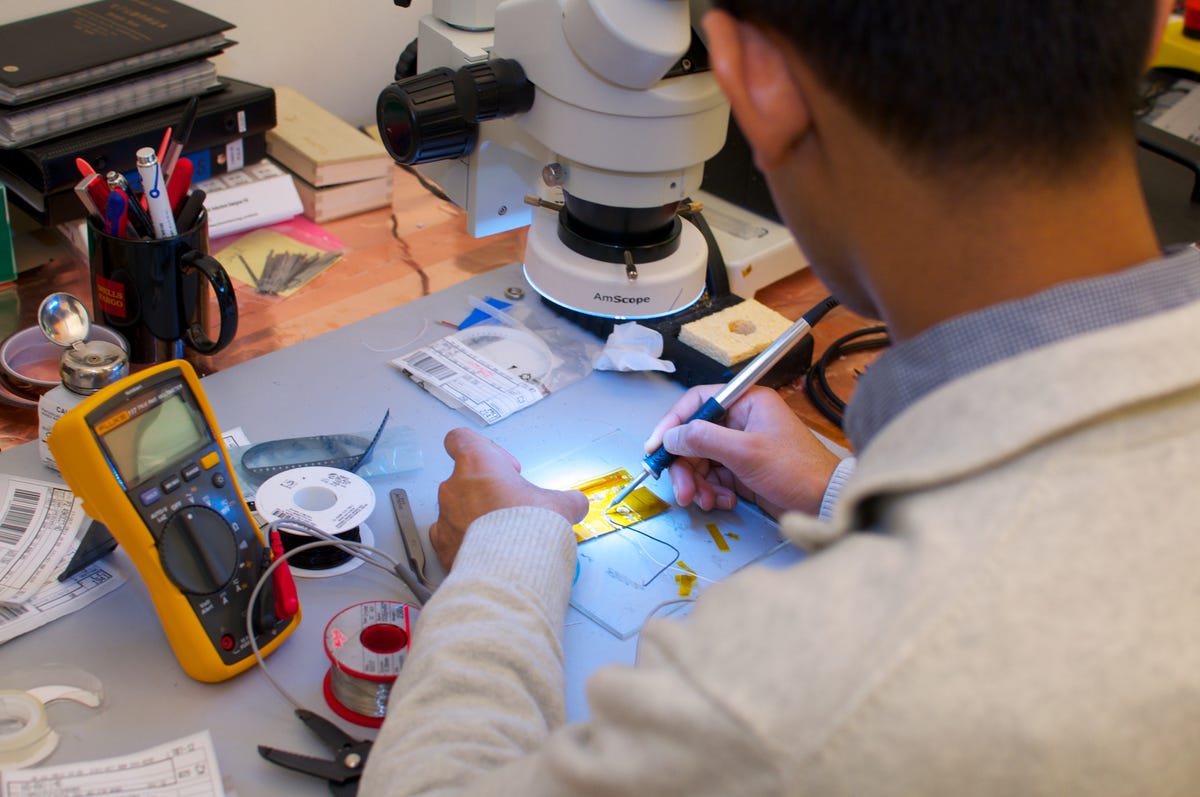.jpg?auto=webp&width=1200)
The original Coin
San Francisco-based startup Coin opened up preorders of its all-in-one payments card on Thursday. Coin lets users program an unlimited number of credit, debit, gift, and rewards cards into a single card device via an iOS and Android app. Users can then swipe for the card of their choice with the toggle of a single button. Its finished product, slated to ship in summer of 2014, is a far cry from its origins.
CEO and founder Kanishk Parashar, a software expert by trade, taught himself the ins and outs of hardware and built this initial prototype himself. "It actually works," he said. "I was able to pay with this at restaurants."
Coin version 2
To refine Coin and turn his solo effort into a full-fledged company, Parashar had to not only recruit the best and brightest he could find in both software and hardware, he had to teach himself a whole lot in the process to get the idea off the ground.
"The first six months that I started this company I spent learning hardware. I used textbooks, Google, Youtube, classes, and I built prototypes," he said.
A more refined Coin
While Coin will have overseas manufacturers in its supply chain, Parashar aims to keep a bulk of the process stateside for speed purposes.
"We're trying as much as possible to stay on-shore. We'd rather focus on delivery than lowering our cost," Parashar said. To do so, Coin will be putting nearly the entirety of its crowdsourced preorder campaign, with a goal of $50,000, towards the manufacturing process.
The challenges of hardware
Despite having taught himself a great deal about hardware, Parashar had to concede to his software roots at a certain stage in the process. But he now has a four-man hardware team, including a Bluetooth wiz and a Stanford-educated aerospace engineer.
"These guys handling this now are experts. They're trained in hardware," he said. "We have so much more hardware work that we software guys...we just handle the software," he added.
The final prototype
Coin's late-stage prototype looks and works very much like the envisioned final product. However, the team is going to limit the initial color to black, not white.
"We call it midnight," Parashar said, with a hint of Apple-esque marketing magic akin to the new space gray line of iOS devices.
The polished product
Coin's finished version, shipping to preorder customers in summer of 2014, will look very much like this mock-up. As for different colors down the line, Parashar is open to the idea, but focused intently on just getting the initial version to ship and function as advertised.

Prototyping in-house
In Coin's small office space on the waterfront of San Francisco's SOMA district, prototype manufacturing and testing is done in-house.
Here, Coin CTO Karthik Balakrishnan -- an aerospace engineer from Stanford -- operates on a prototype device as the team finishes up its last two months of testing before transitioning to the three to four month manufacturing phase. Coin is in overdrive to hit the summer 2014 deadline when it hopes to ship to preorder customers.
The robotic card swiper
This custom-built robotic card swiper lets Coin's hardware team of four continuously test the dynamic magnetic strip of the device. Here, mechanical engineer Rory Nordeen, who holds the position of hardware lead for Coin, runs swipe tests under a variety of different parameters.
"That little robot that goes back and forth allows us to make a really good decision on our stripe technology," Parashar said.

